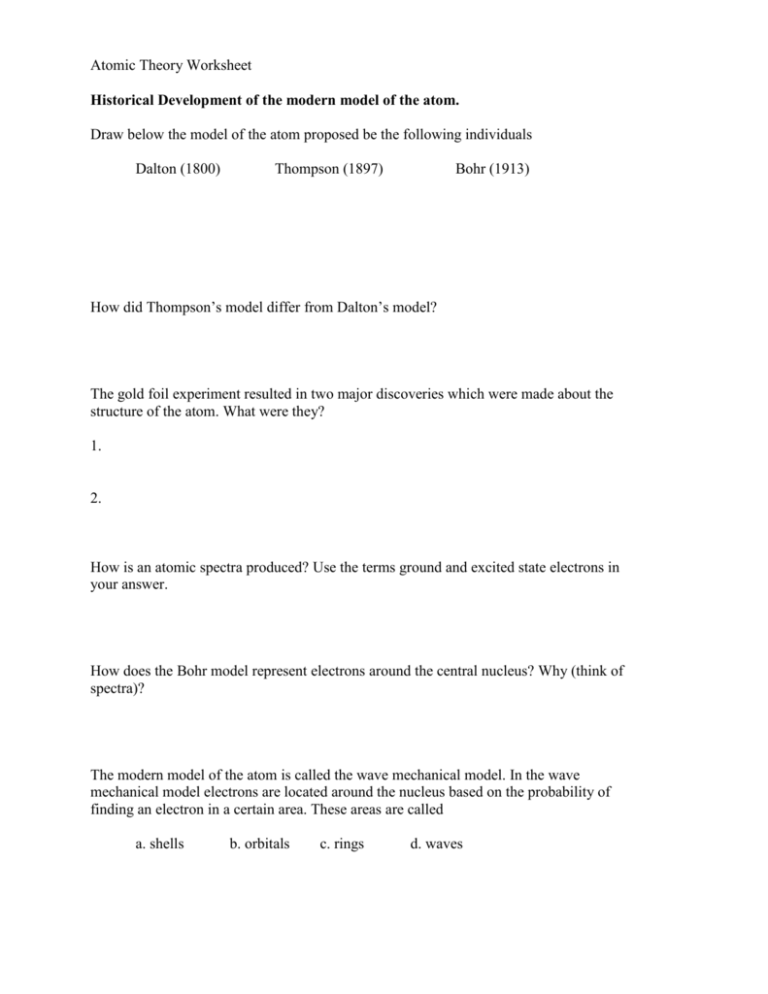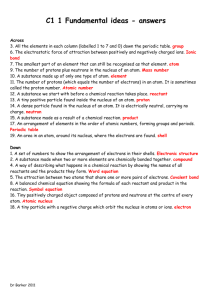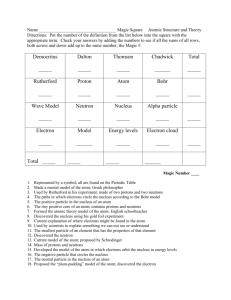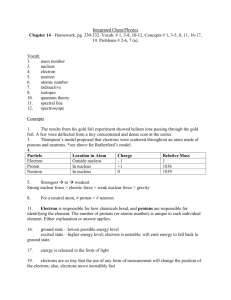Atomic Theory Worksheet: History & Models
advertisement

Atomic Theory Worksheet Historical Development of the modern model of the atom. Draw below the model of the atom proposed be the following individuals Dalton (1800) Thompson (1897) Bohr (1913) How did Thompson’s model differ from Dalton’s model? The gold foil experiment resulted in two major discoveries which were made about the structure of the atom. What were they? 1. 2. How is an atomic spectra produced? Use the terms ground and excited state electrons in your answer. How does the Bohr model represent electrons around the central nucleus? Why (think of spectra)? The modern model of the atom is called the wave mechanical model. In the wave mechanical model electrons are located around the nucleus based on the probability of finding an electron in a certain area. These areas are called a. shells b. orbitals c. rings d. waves Name __________________________________ Atomic Structure and Theory Directions: Put the number of the definition from the list below into the square with the appropriate term. Check your answers by adding the numbers to see if all the sums of all rows, both across and down add up to the same number, the Magic #. Democritus Dalton Thomson Chadwick Total _____ _____ _____ ______ _____ Rutherford _____ Proton _____ Atom _____ Bohr _____ _____ Wave Model Neutron Nucleus Alpha particle _____ _____ _____ _____ _____ Electron _____ Model ______ Energy levels _____ Electron cloud _____ Total _____ _____ _____ _____ ______ Magic Number ______ 1. 2. 3. 4. 5. 6. 7. 8. 9. 10. 11. 12. 13. 14. 15. 16. 17. 18. Represented by a symbol; all are found on the Periodic Table Made a mental model of the atom; Greek philosopher Used by Rutherford in his experiment; made of two protons and two neutrons The paths in which electrons circle the nucleus according to the Bohr model The positive particle in the nucleus of an atom The tiny positive core of an atom; contains protons and neutrons Formed the atomic theory model of the atom; English schoolteacher Discovered the nucleus using his gold foil experiment Current explanation of where electrons might be found in the atom Used by scientists to explain something we can not see or understand The smallest particle of an element that has the properties of that element Discovered the neutron Current model of the atom; proposed by Schrodinger Mass of protons and neutrons Developed the model of the atom in which electrons orbit the nucleus in energy levels The negative particle that circles the nucleus The neutral particle in the nucleus of an atom Proposed the “plum-pudding” model of the atom; discovered the electron








